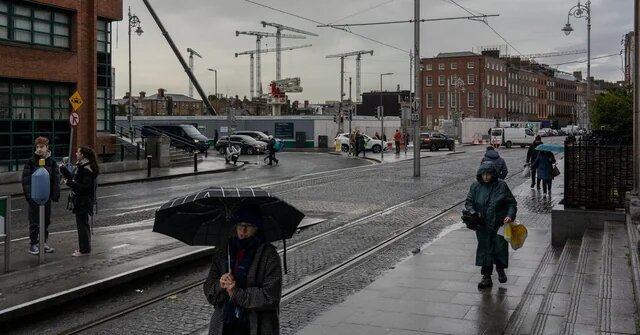Dublin, the capital of Ireland, has long been a city of rich history, vibrant culture, and economic significance. However, in recent years, dublins land nyt politics and property market have become hot topics, drawing attention from both local and international media. Among the outlets that have covered this issue, The New York Times (NYT) stands out for its in-depth analysis and global perspective. This article explores how The New York Times covers Dublin’s land politics and property market, highlighting the key themes, challenges, and insights presented in their reporting.
Dublin’s Housing Crisis: A Central Focus
One of the primary aspects of dublins land nyt and property market that The New York Times has consistently covered is the housing crisis. Like many major cities around the world, Dublin has faced a severe shortage of affordable housing, which has been exacerbated by rising property prices, limited land availability, and increasing demand.
The NYT’s coverage often delves into the socio-economic implications of this crisis, highlighting how the scarcity of affordable housing affects different demographics. The newspaper has reported on the struggles of young professionals who are unable to find suitable housing within the city, forcing many to live in the suburbs or even further afield. The Times has also touched on the challenges faced by low-income families and the elderly, who are particularly vulnerable in such a competitive market.
Land Ownership and Development Controversies
The politics surrounding land ownership and development in Dublin is another area of focus in The New York Times’ coverage. Dublin’s land politics are often characterized by tension between private developers, government authorities, and the public. The NYT has reported on controversies related to land rezoning, the sale of public land to private developers, and the influence of corporate interests on urban planning decisions.
One of the significant issues covered by The New York Times is the debate over how much of Dublin’s land should be developed for residential use versus commercial or public purposes. This debate is crucial as it affects the city’s ability to provide affordable housing, maintain green spaces, and support sustainable urban growth. The NYT has often highlighted cases where public outcry has led to changes in development plans, reflecting the power of civic engagement in shaping Dublin’s future.
The Role of Foreign Investment
Foreign investment in Dublin’s property market is another topic that The New York Times has explored extensively. Dublin’s appeal as a European hub for multinational corporations, particularly in the tech sector, has attracted significant foreign capital. While this influx of investment has fueled economic growth, it has also contributed to rising property prices, making it more difficult for local residents to afford housing.
Government Policies and Urban Planning
The New York Times has also provided critical analysis of government policies and urban planning initiatives in Dublin. The newspaper has reported on the efforts of Irish authorities to address the housing crisis through policies such as rent controls, incentives for affordable housing development, and initiatives to increase housing supply.
However, The dublins land nyt has also been critical of certain government actions, particularly when policies have fallen short of expectations or have unintended consequences. For example, the newspaper has covered instances where well-intentioned policies led to delays in construction or made it difficult for developers to meet the demand for housing.
Conclusion
The New York Times’ coverage of Dublin’s land politics and property market offers a comprehensive view of the challenges and opportunities facing the city. Through in-depth reporting and analysis, the NYT sheds light on the complex interplay between housing demand, land ownership, foreign investment, and government policy. For readers interested in understanding the dynamics shaping Dublin’s urban landscape, The New York Times provides valuable insights into one of Europe’s most vibrant yet troubled property markets.
